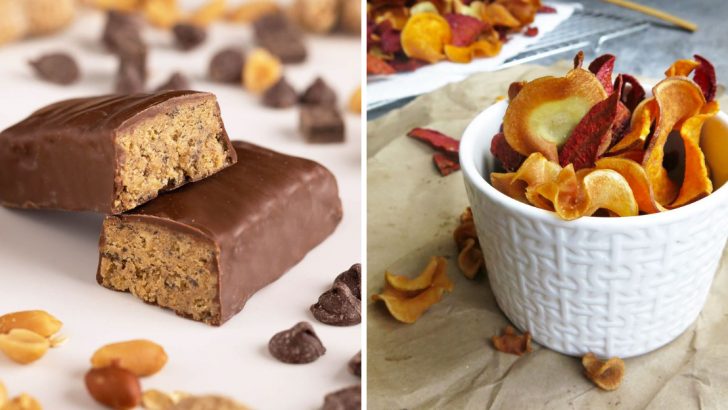Food companies love slapping health claims on their products, turning ordinary junk food into supposed superfoods overnight. These marketing wizards transform sugar bombs and processed nightmares into ‘all-natural,’ ‘low-fat,’ or ‘antioxidant-rich’ options that promise better health while delivering quite the opposite.
Understanding these sneaky food imposters helps us make genuinely nutritious choices instead of falling for clever packaging tricks.
1. Granola Bars
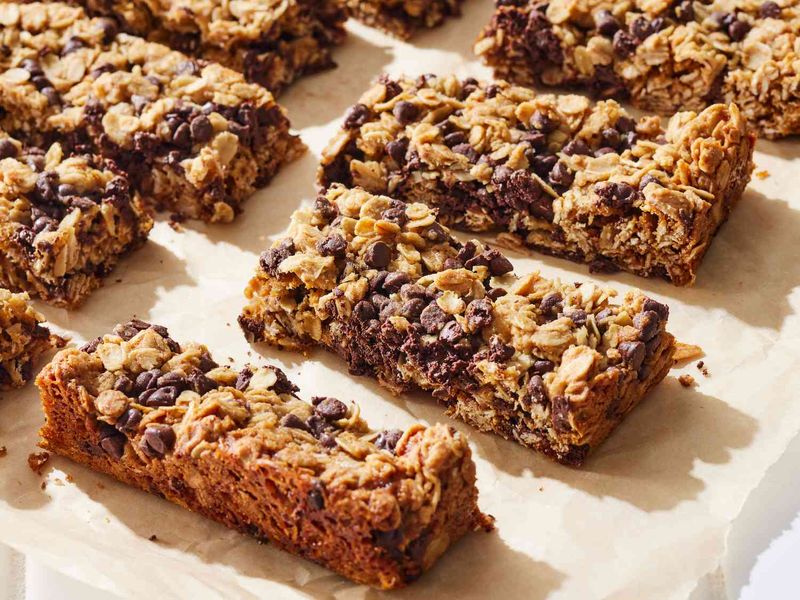
Rip open that wrapper and what do you really have? A candy bar wearing hiking boots. Most commercial granola bars pack more sugar than a chocolate bar, with some containing up to 12 grams per tiny rectangle.
The health halo comes from scattered oats and the occasional nut, but they’re drowning in corn syrup, chocolate chips, and mysterious binding agents. Food companies bank on your association between granola and health-conscious hikers.
2. Veggie Chips
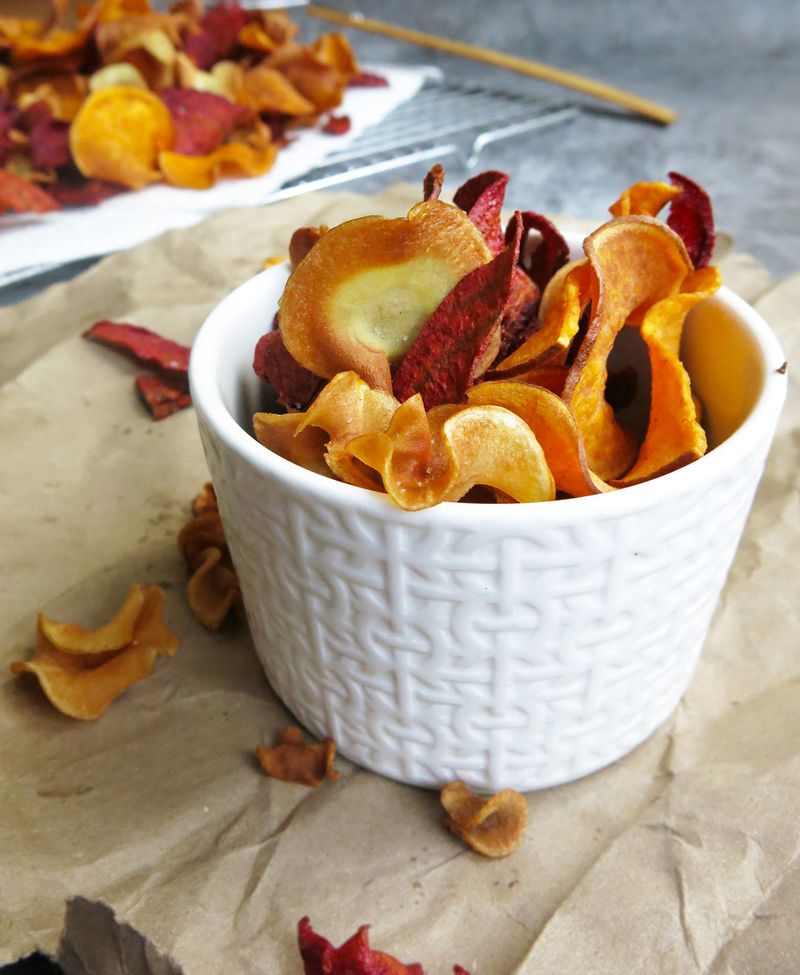
Feeling virtuous munching those colorful veggie chips? Sorry to burst your snack bag, but those crispy green and orange slices rarely contain meaningful vegetable nutrition. Most veggie chips are potato starch dyed with vegetable powder for color.
The manufacturing process strips away fiber, vitamins, and minerals that made the original vegetables healthy in the first place. What remains? A crunchy, salty, oil-soaked chip that’s nutritionally bankrupt.
3. Fruit Yogurt
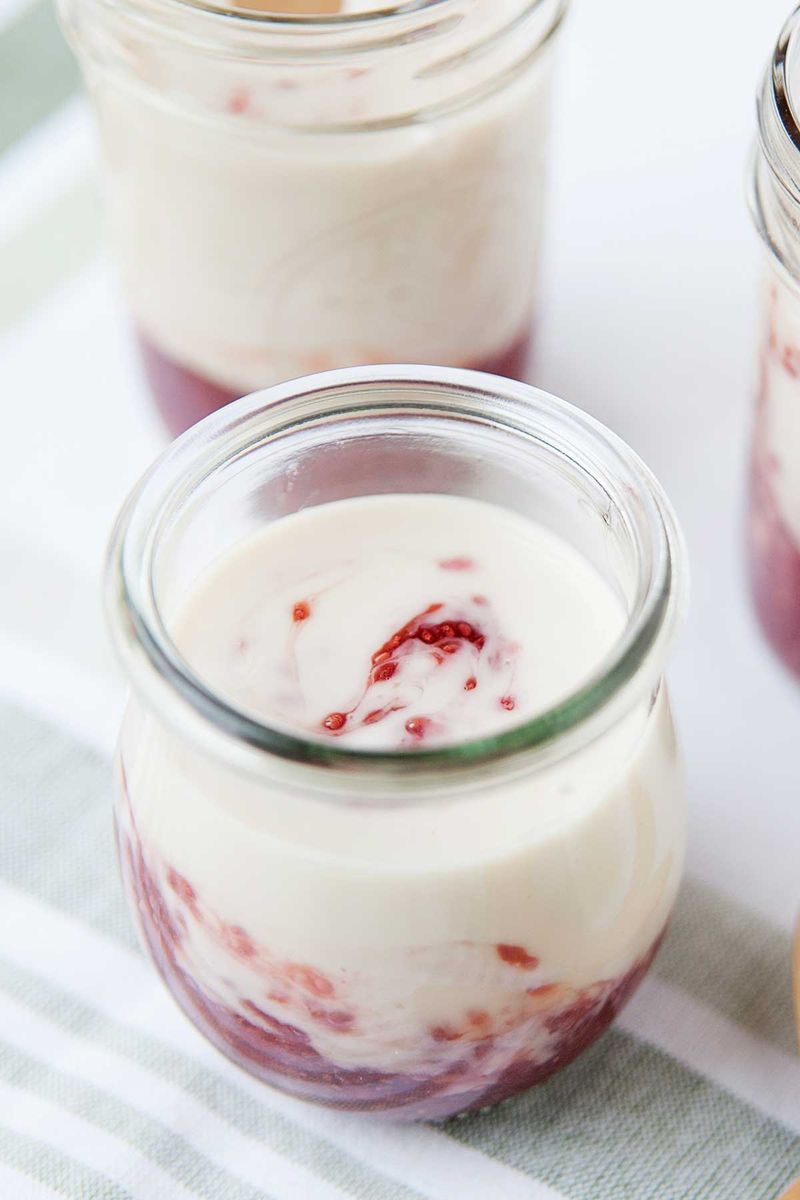
Holy sugar overload! That innocent-looking fruit yogurt cup contains more sweeteners than an ice cream sundae. A single serving of flavored yogurt can pack 20+ grams of sugar – that’s 5 teaspoons hiding behind pictures of fresh berries and farm scenes.
The yogurt industry masterfully markets these desserts as breakfast food by highlighting protein content and probiotic benefits. Meanwhile, they quietly dump in more sugar than your morning cereal.
4. Store-Bought Smoothies
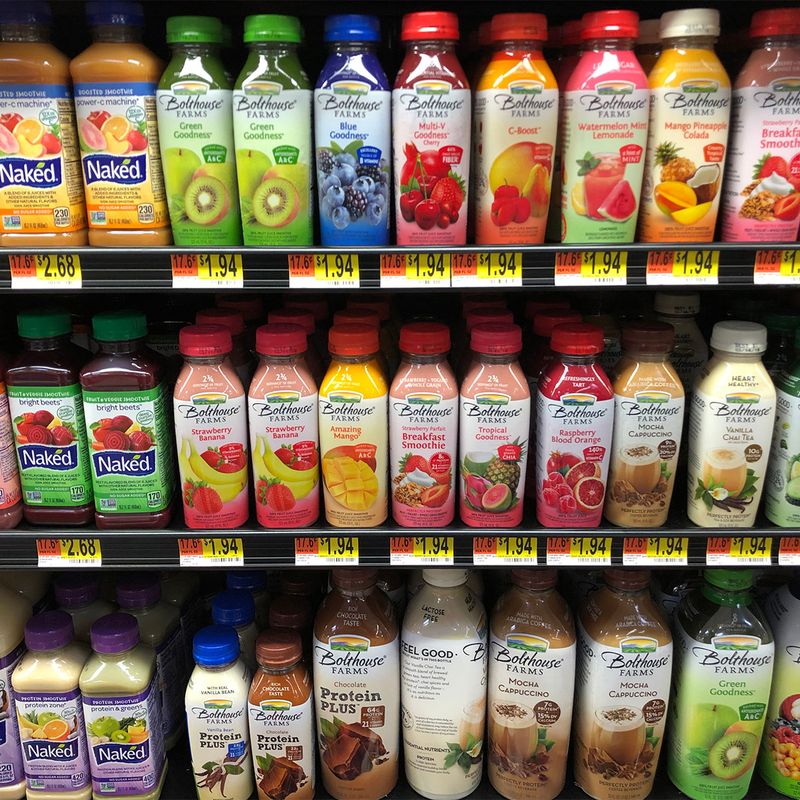
Grab-and-go smoothies promise instant nutrition, but most commercial versions deliver liquid candy instead. A standard 16oz bottle often contains 30-60 grams of sugar – equivalent to slurping down 7-15 sugar cubes through a straw!
Many pre-made smoothies use fruit concentrates, not whole fruits, stripping away fiber that would slow sugar absorption. Manufacturers add thickeners, preservatives, and “natural flavors” (a mysterious term hiding countless additives) to extend shelf life.
5. Gluten-Free Snacks
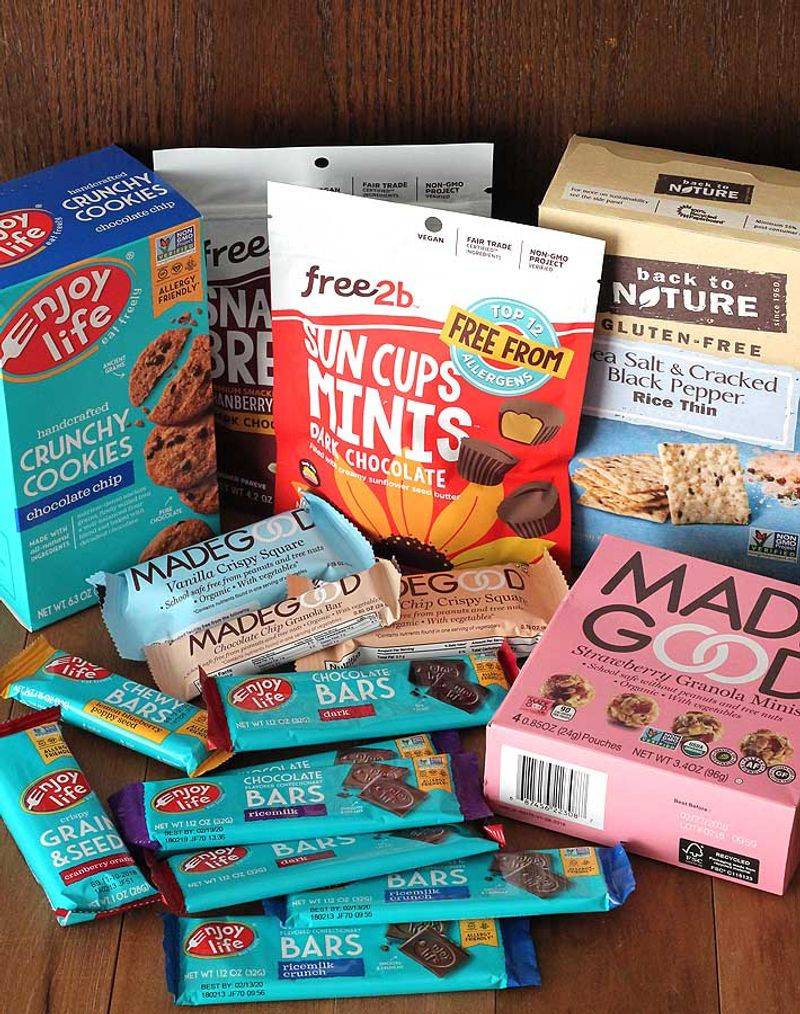
Gluten-free cookies, crackers, and bread aren’t automatically healthier unless you have celiac disease or gluten sensitivity. These products often contain more sugar, fat, and empty calories than their gluten-containing counterparts!
Manufacturers compensate for missing gluten by adding extra binding agents, starches, and fillers that spike blood sugar faster than wheat products. The processing required to mimic gluten’s texture often strips away nutrients, leaving a nutritional wasteland behind.
6. Agave Nectar
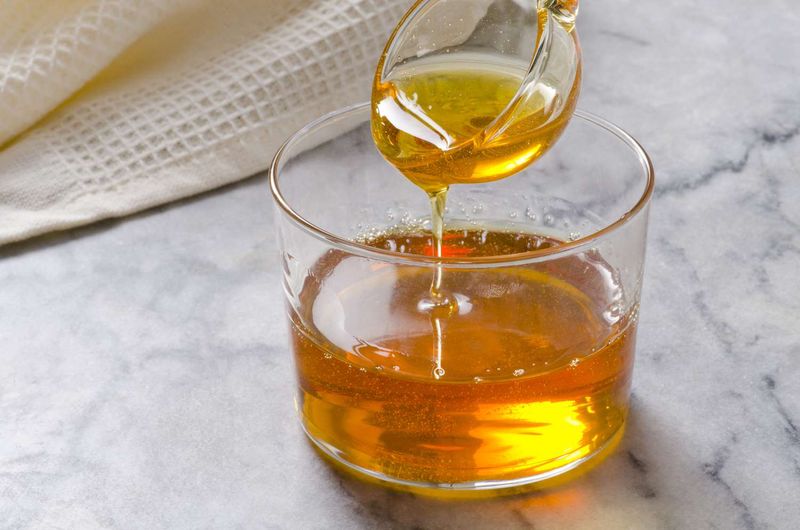
Marketed as the natural sweetener for health-conscious consumers, agave nectar is actually worse than the high-fructose corn syrup it’s meant to replace! This “natural” sweetener undergoes heavy processing and contains up to 90% fructose – higher than any other common sweetener.
Your liver metabolizes fructose differently than glucose, potentially increasing fat storage and insulin resistance when consumed in high amounts. The health food industry exploits agave’s low glycemic index while ignoring its metabolic impacts.
7. Protein Bars
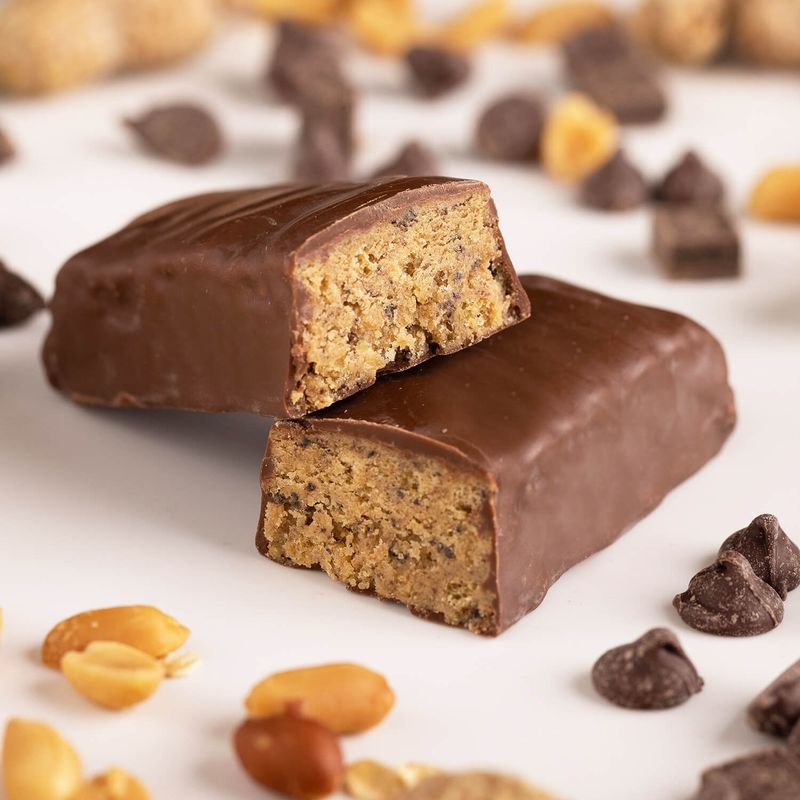
Ripping open a protein bar after your workout? You might as well be eating a Snickers with amino acids. Many popular protein bars contain more sugar than protein, plus enough palm oil and preservatives to make a nutritionist weep.
The worst offenders hide behind impressive protein numbers while delivering 20+ grams of sugar and a paragraph of unpronounceable ingredients. Even “low-sugar” versions often contain sugar alcohols that cause digestive distress for many people.
8. Reduced-Fat Peanut Butter
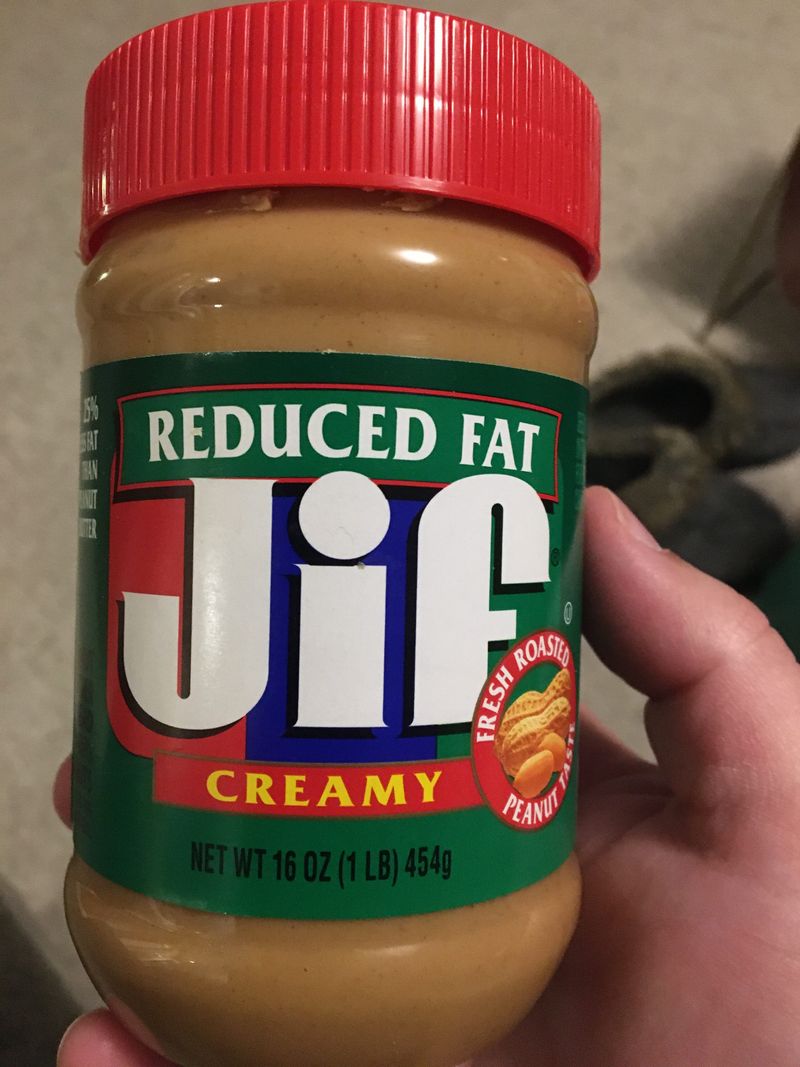
Reduced-fat peanut butter performs an impressive nutritional magic trick: removing healthy fats and replacing them with sugar and fillers. Regular peanut butter contains mostly monounsaturated fats – the heart-healthy kind found in olive oil and avocados.
When manufacturers strip these beneficial fats, they add sugar, maltodextrin, and corn syrup solids to improve flavor and texture. The calorie difference? Negligible at best, while the nutritional quality plummets.
9. Multigrain Bread
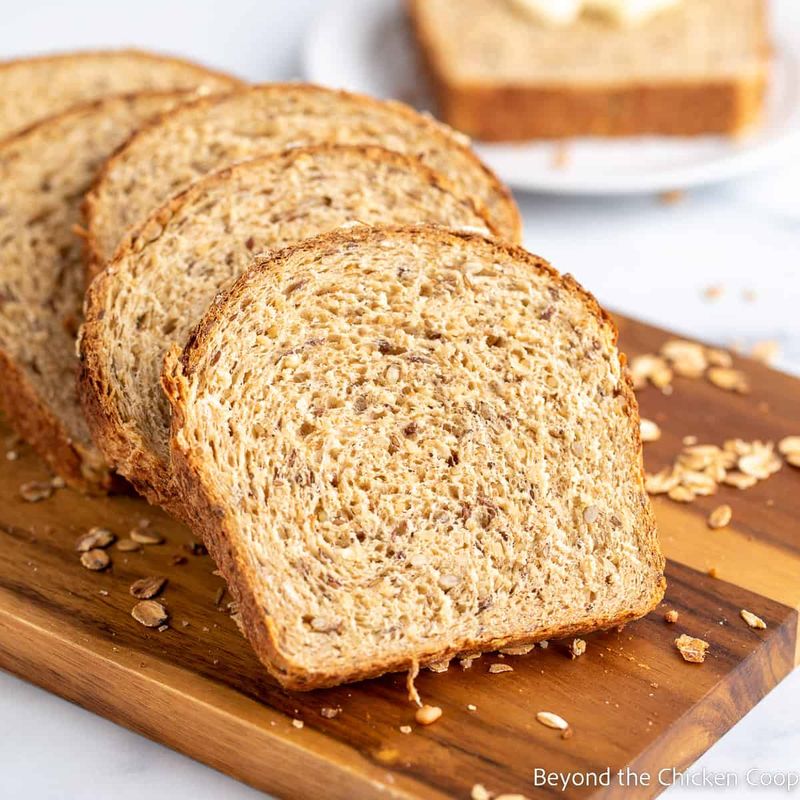
“Multigrain” sounds impressive until you realize it simply means “contains multiple refined grains” – not necessarily whole grains. Many multigrain breads use enriched flour (white flour with a few nutrients added back) as their main ingredient, with other grains sprinkled in for marketing purposes.
Check the ingredients list – if “enriched wheat flour” appears before whole grains, you’re getting refined carbs with minimal fiber benefits. Some manufacturers add caramel coloring to make bread look more wholesome and hearty!
10. Rice Cakes
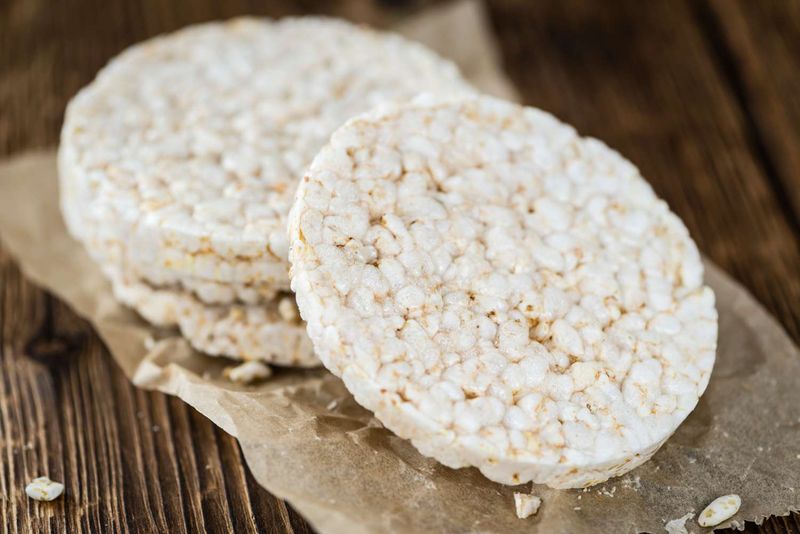
Rice cakes have maintained their health food reputation since the 1980s diet craze despite offering virtually no nutritional value. These air-puffed discs deliver quick-digesting carbohydrates that spike blood sugar faster than a tablespoon of pure sugar!
With no fiber, minimal protein, and practically zero nutrients, rice cakes leave you hungry minutes after eating them. Their only real virtue is being low-calorie – because they’re essentially nothing in food form.
11. Low-Fat Salad Dressing
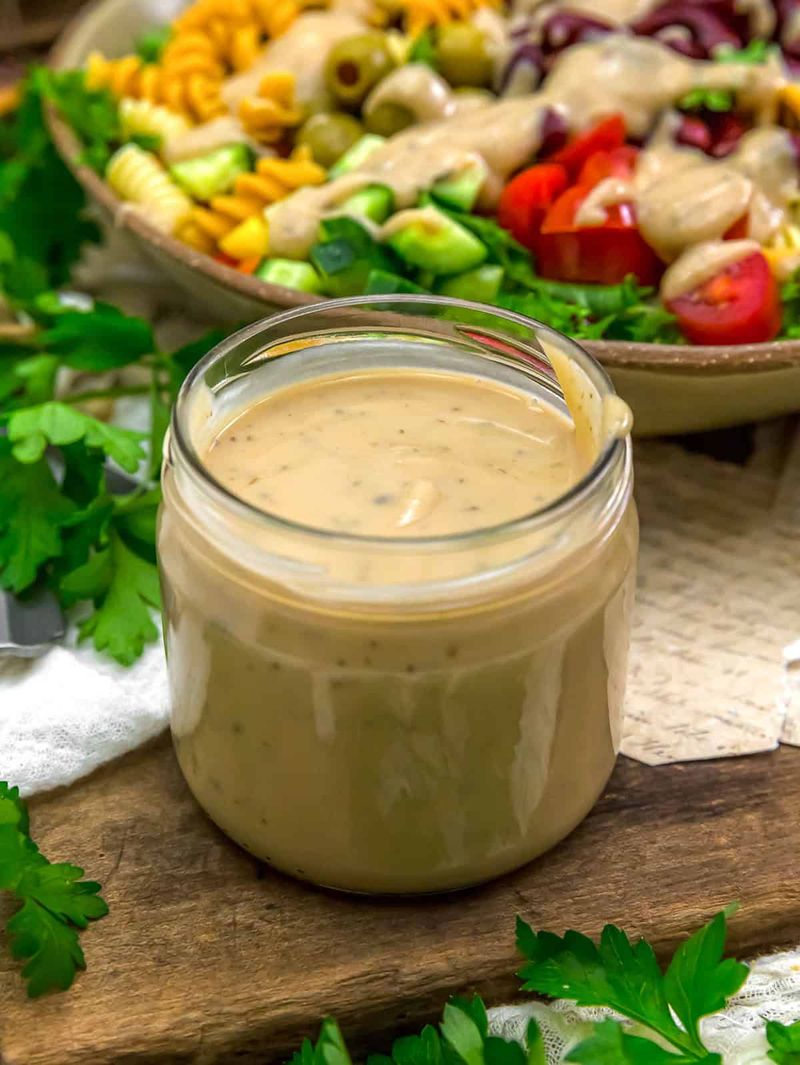
That virtuous bottle of low-fat dressing is sabotaging your healthy salad! When manufacturers remove fat, they replace it with sugar, high-fructose corn syrup, and thickeners to maintain flavor and texture.
The fat in dressing serves an important purpose beyond flavor – it helps your body absorb fat-soluble vitamins (A, D, E, K) from all those vegetables. Without it, many nutrients in your beautiful salad just pass through unused.
12. Flavored Instant Oatmeal
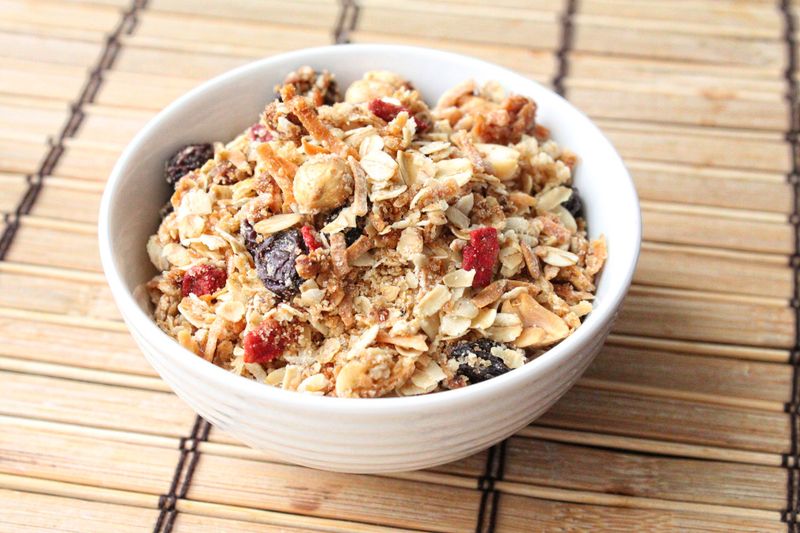
Those convenient oatmeal packets might save you three minutes in the morning, but they’ll cost you nutritionally. A single packet of flavored instant oatmeal can contain 3-4 teaspoons of added sugar – turning your wholesome breakfast into dessert.
The processing required to make oats “instant” significantly raises their glycemic index, causing faster blood sugar spikes than traditional steel-cut or rolled oats. Most flavored varieties also contain artificial colors, flavors, and preservatives hiding behind that cinnamon apple picture.
13. Diet Soda
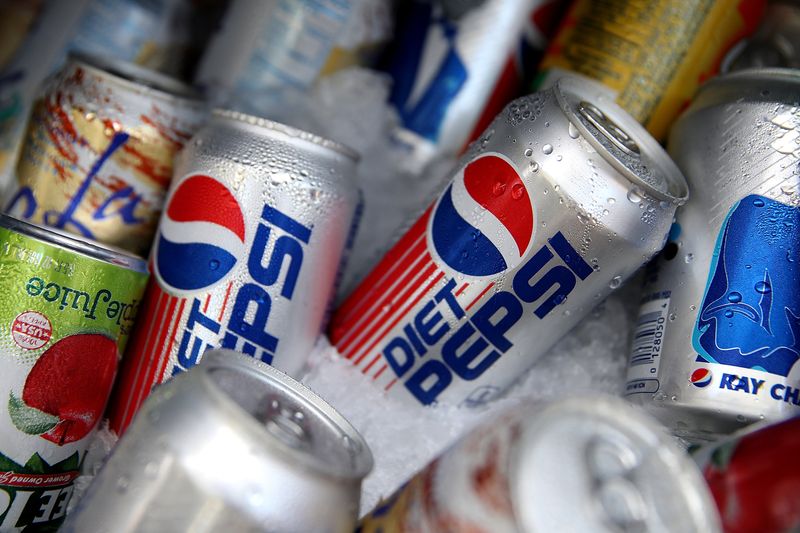
Zero calories doesn’t mean zero health effects! Diet sodas replace sugar with artificial sweeteners like aspartame, sucralose, or acesulfame-K – chemicals that may disrupt gut bacteria and potentially increase cravings for sweet foods.
Research links regular diet soda consumption with increased risk of metabolic syndrome, type 2 diabetes, and cardiovascular issues. The caramel coloring in brown sodas contains 4-methylimidazole, a potential carcinogen, while phosphoric acid leaches calcium from bones.
14. Trail Mix With Yogurt Chips
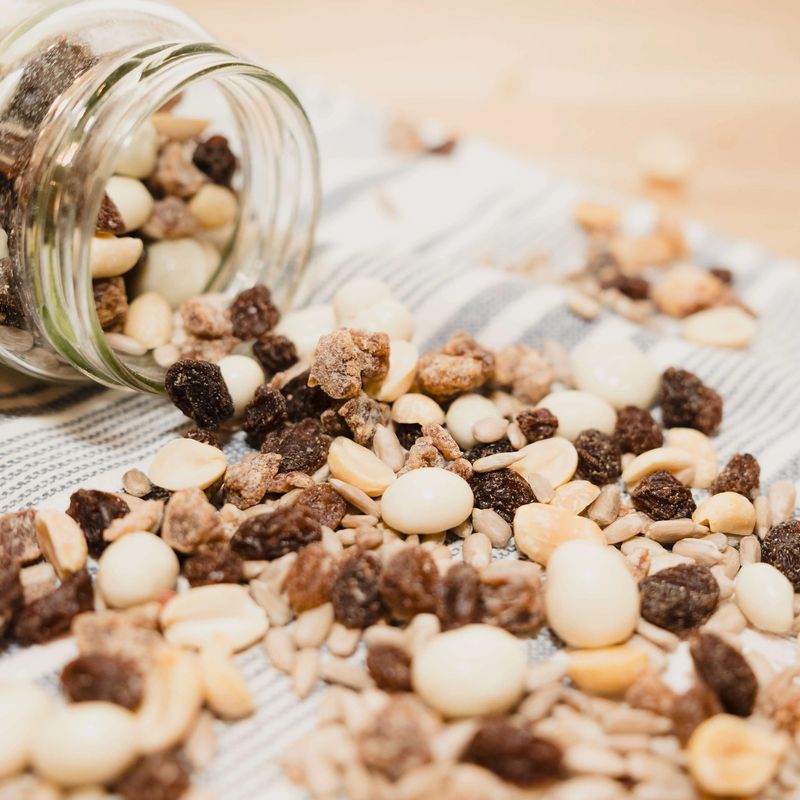
Those white “yogurt” chips in your trail mix contain zero actual yogurt – they’re sugar, palm oil, and milk powder formed into chips. One handful of yogurt chip trail mix delivers more sugar and unhealthy fats than a candy bar!
Commercial trail mixes often include chocolate pieces, sweetened dried fruit, and honey-roasted nuts that multiply the sugar content. The healthy nuts and seeds get overshadowed by these sweet additions that turn a potentially nutritious snack into dessert.
15. Bran Muffins
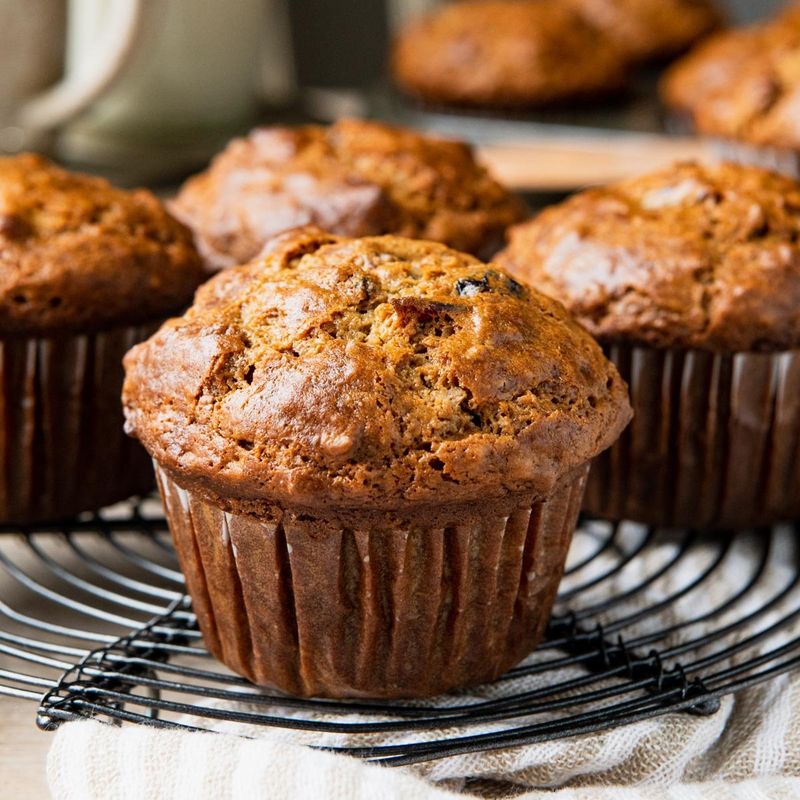
Bran muffins perform an impressive optical illusion – looking like a healthy choice while delivering the nutritional profile of dessert. Commercial versions from coffee shops and grocery stores often contain more sugar than fiber, negating any digestive benefits the bran might offer.
The average coffee shop bran muffin packs 350-500 calories and up to 40 grams of sugar – equivalent to eating a glazed donut! Size matters too; today’s muffins have ballooned to 2-3 times the size of muffins from the 1980s.
16. Açaí Bowls
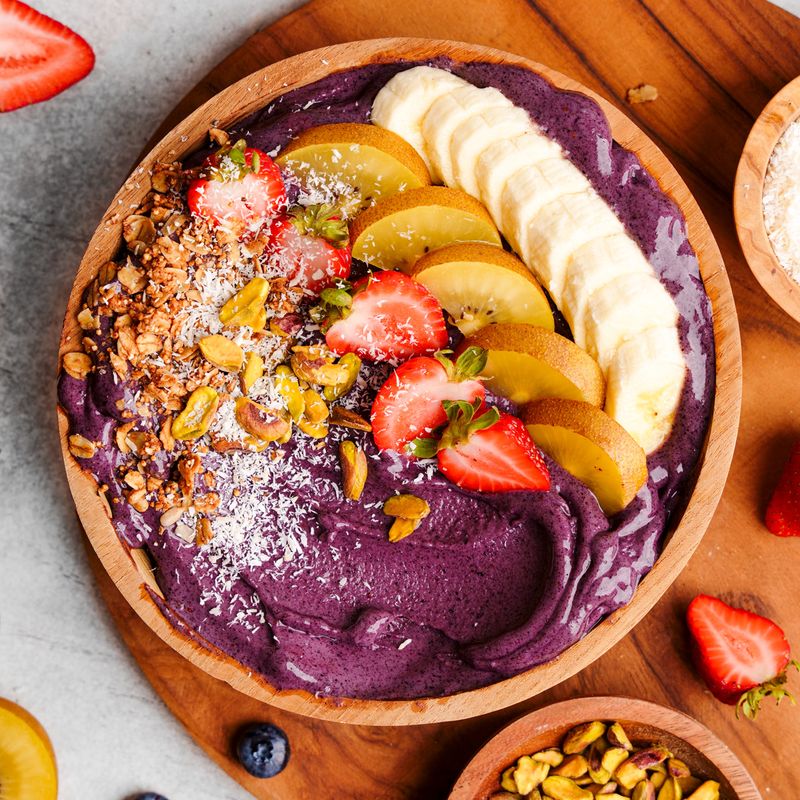
Instagram’s favorite health food often contains more sugar than a pint of ice cream! While açaí berries themselves offer antioxidants, commercial açaí bowls drown these benefits in sweetened açaí puree, fruit juice, honey, granola, and multiple sweet toppings.
A typical café açaí bowl contains 50-75 grams of sugar and 500+ calories – numbers that would make a milkshake blush. The frozen texture creates the illusion of a healthier alternative to ice cream while delivering similar sugar content.

